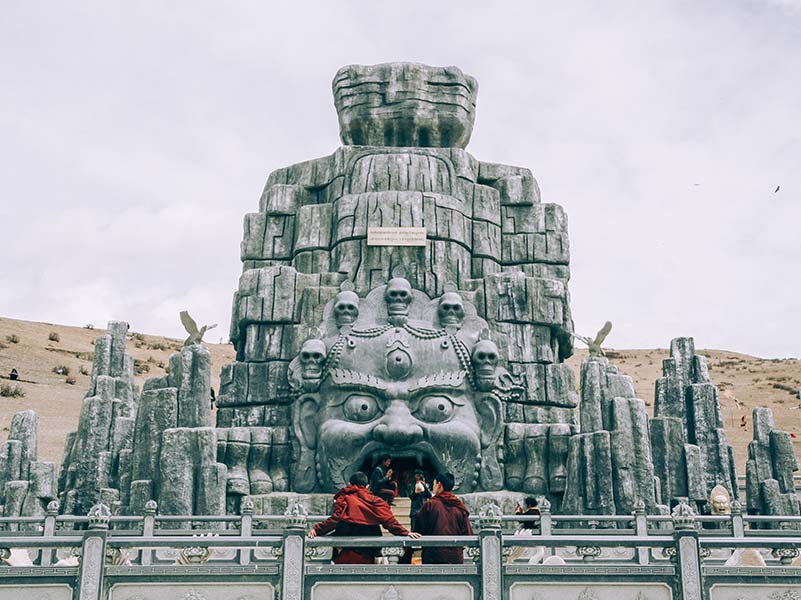
By Sandra Morante
Travel Photographer25 Oct 2019 - 6 Minute Read
Larung Gar was never in my travel plans. I didn’t even know anything about it until I was immersed in Persian lands. I heard of this isolated Buddhist settlement when I searched for information on Zoroastrianism in Iran, and the different funeral arrangements practiced in other countries.
That was when I learned about the Sky Burial ritual, still in force today in several regions of China and Mongolia, including Larung Gar. My curiosity pulled me to travel and try to comprehend the traditions of the Tibetans.



Understanding other people's cultural rites, due to our limited awareness and social conditioning, is not a simple task, especially if the questions that may arise are related to death. The Sky Burial is a practice that requires a high level of understanding and impartiality. Perhaps, at first glance, it may seem like a barbaric and insensitive act to outsiders, as it brings the definition of detachment of body and soul to its extreme.
How can we understand this “disappearing” of the body, through its consumption by natural agents, in the most generous way possible? According to Tibetan Buddhism, there’s no need to preserve the body when life is extinct, because once the soul leaves it, it becomes an empty container. As unmistakable proof of human generosity and consciousness, the remains of the deceased are given as food to scavenging birds to continue with the cycle of life.



These birds are considered sacred beings in Tibet. Their only task is to clean the bones of the deceased and purify them. With their help, the human soul will “transmigrate” lightly to its next destination, depending on the karma it has been accumulating for its many, ancient lives.
Before arriving, I wondered, would I be able to digest those disturbing images of corpses being devoured with no mercy or kindness?
During the whole ritual, I stood motionless, without uttering a word. Processing what I was experiencing needed a special dose of humility and a lack of overthinking. The lesson was unmistakably confronting and real. I was a spectator of the pure impermanence of life, without any kind of trendy filter. I realized that death, if we take it as it is, does not understand fake make-up or sparkly glamour, because death is rough, cruel, and raw.



Leaving Larung Gar, I began to glimpse something deeply spiritual in this practice. Perhaps a romantic idea, although violent, of an unconditional return and surrender to nature.
We can’t deny that we’re an unequivocal and inescapable part of the cycle of non-permanence. Life is interconnected with death and they both need each other to create a coherent balance. This coexistence sounds logical, but I had a lot of homework to do back home.
My attendance at that rite marked a turning point in my way of understanding and assimilating death. I began to question our strong emotional bond with the deceased, even when the spark of life has already disappeared. I also wondered if the Tibetan Buddhists could ever understand our Western rites: the deceased wearing makeup, confined inside a very expensive wooden box, ready to be buried underground.
And most ironically of all: made to look as alive as possible.
Editor's note: When visiting sacred sites, it's important to maintain a respectful attitude and distance, as this photographer did.
Discover similar stories in
transformation
Travel Photographer
Sandra is a lifelong traveler, web designer and photographer, born near Barcelona and living temporarily in Southeast Asia.




No Comments